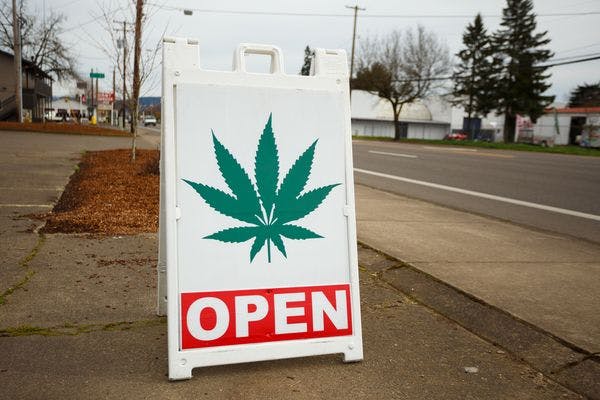Joshua Rainey Photography – Shutterstock
Legal weed in New York was going to be a revolution. What happened?
A few years ago, Howell Miller was in prison in New York State, walking laps around the track with a fellow-inmate he’d befriended, who happened to be a former U.S. congressman. Prior to the prison stint, Miller, a cheerful guy in his early fifties, had run a construction company and a serious marijuana operation, simultaneously. “I was a silent baller,” he told me. “Then one of my guys got caught with forty-four hundred pounds on a truck.” As Miller neared the end of a twelve-year sentence, he began hearing stories of people getting rich running weed shops: “I was thinking, Why the hell am I still in jail?” His ex-congressman friend, Anthony Weiner, told him on the track that day that the first dispensary licenses were going to be awarded to people who had marijuana convictions. “I thought, I’m gonna get out and look into that,” Miller said.
What Weiner had described was the Conditional Adult-Use Retail Dispensary program, or CAURD. It’s the flagship program of the Office of Cannabis Management (O.C.M.), the agency created, in 2021, to oversee the legalization of marijuana in New York. The state’s cannabis restrictions had been loosening for almost a decade, but that year the government passed a law that would have seemed unthinkable just a short while before. The governor at the time, Andrew Cuomo, had been pushed left on the issue during a primary challenge from Cynthia Nixon; after his reëlection, he found himself knee-deep in multiple scandals, and unusually pliable. The law not only made pot legal for adults; it also allocated forty per cent of weed-related tax revenue to communities where cops had made disproportionate marijuana arrests, and it set a goal of awarding half of all licenses to “social and economic equity” applicants: women, people of color, service-disabled veterans, distressed farmers, and residents of those overpoliced communities.
CAURD went a step further, mandating that the first licenses for the sale of recreational weed go to people who had, or whose family members had, a marijuana-related conviction. In the previous four decades, according to an analysis by the Legal Aid Society, police in New York had made more than a million marijuana arrests. Although weed is consumed in roughly equal proportions across the racial and economic spectrum, as recently as 2020 people of color were subjected to ninety-four per cent of marijuana arrests and summonses in New York City; arrests in the city were also much heavier in high-poverty areas. The idea for CAURD was plain: legal weed as reparations.
